최근 글 목록
-
- 학리적인 이론이 아닌 재영토화1(1)
- G-raf
- 2011
-
- Duriban petition for electricity
- G-raf
- 2010
-
- 버섯사냥 프로젝트 시작(2)
- G-raf
- 2010
-
- 6월 12일 DIY 문신 워크샵(3)
- G-raf
- 2010
-
- 책들을 원하시면!
- G-raf
- 2010
13개의 게시물을 찾았습니다.
Participatory Media, Participatory Society
Introduction: Participatory Media
“Participatory media” is a word that many people have never heard, yet most people can easily produce a self-made definition quite similar to the conceptions of other people. Since the term is not yet widely used, there is a variety of definitions and many other terms are also used to refer to the same phenomena. Since participatory media is indeed “participatory,” we believe that restricting the phenomena to a single terminology-based concept would be restrictive to the extent that it would threaten the inclusive nature of free participation and diversity fostered by participatory media. Each individual should be free to invent their own concepts and terms for participatory media, thereby sustaining and strengthening the genuine and authentic nature of participatory phenomena.
In our definition, participatory media is media which is open to and largely consists of non-specialist, non-professional media content produced by regular people with no training or expertise in journalism or media. However, participatory media is all-inclusive so that professionals, experts and other such discursive subjects implying contradiction to the discursive subject of “citizen journalist” can also participate and contribute content. The popular term “user-created content” is an accurate depiction of most participatory media content.
The interactive characteristics of the internet, often referred to as “Web 2.0,” which allow users to produce and contribute content and involve themselves in mutually active discourse has been a major factor in the rise of participatory media. However, this is not to say that participatory media never existed before Web 2.0. The term “participatory media” is unfortunately filled with assumptions, such as: non-participatory media exists, which is not the case. All media have variable levels of participation, otherwise they wouldn’t be mediums. Even mainstream news media is participatory to some degree. The footage of U.S. president John F. Kennedy’s assassination and the footage of police beating Rodney King in Los Angeles were captured by ordinary non-professional citizens and broadcasted on mainstream television news. Newspapers usually accept letters to the editor and op-ed pieces from citizens, the rise of zines in the 1980s and pirate radio are also examples of participatory media, yet compared to Web 2.0 technologies, allow for relatively limited and less inclusive participation. Web 2.0 technologies allow anyone to write their own blogs, upload videos, photos, engage in discussion forums and post comments.
Producers of participatory media, often referred to as “citizen journalists,” would have been traditionally referred to as consumers, viewers, readers, watchers or users of old media. Viewed from this historical context, participatory media is playing a large role in deconstructing the historically-established, strictly-defined roles of production and consumption in the world of media. However, the term “citizen journalist” is also loaded with exclusive assumptions regarding citizenship. Are professional journalists not regular citizens? The concept of what is “regular” is also not well-defined, but from our viewpoint, the “citizen journalist” is the producer of media content who occupies a relatively less influential role in media due to not having formal training and not engaging in content production as a profession. In other words, a citizen journalist is a non-professional journalist, although professional journalists are also citizens, a contradiction which makes the term somewhat confusing.
In the participatory framework, everybody and anybody produces and consumes media, a phenomenon which makes the references to “producer” and “consumer” an invalid depiction of social roles in participatory media, effectively eliminating two discursive subjects and the binary logic contained within their meanings: “consumers don’t produce, they consume; producers don’t consume, they produce.” As if consumption isn’t inherent in production and production isn’t inherent in consumption. The social meaning of production only exists by excluding consumption and the social meaning of consumption is only understood by the exclusion of production. Due to these exclusions, both of these discursive subjects are invalid in participatory media. For this reason, the term “user” has become widely used in order to capture the inclusive nature of participatory media.
Participatory media gives people more self-determination in deciding which issues should receive media coverage and be reported, thereby re-framing our conception of which issues are relatively important and not important in society, which is also a participatory process. If participatory media is able to receive more participation than the readership or viewership of mainstream media, such a phenomenon may have a strong impact on determining which issues receive attention in the political world as well.
In order to obtain a further understanding of participatory media, we will evaluate, compare and contrast a few websites with open publishing of media content, including OhmyNews, a self-avowed “citizen journalism” website based in South Korea.
OhmyNews
The OhmyNews website was founded by media activist Oh Yeon Ho in February 2000. OhmyNews encourages people to report news and contribute content with the slogan, “all citizens are journalists.” The website calls itself the “news association of news guerrillas,” espousing a term which has been used to refer to the underground, guerrilla-like existence of participatory media, lurking outside the realms of mainstream news media and its restrictive field of discourse.
Although OhmyNews news content mostly consists of citizen reporting, it is a privately-owned corporation with professional staff editors and reporters. To fund the website, Oh Yeon Ho sold his house and received funding from five sympathetic businessmen, the six of whom became the first stockholders of OhmyNews. Funding mainly comes from donations and advertisements on the website. Since internet advertising is a difficult field in which to compete with major portal sites such as Daum and Naver, OhmyNews has had fundraising difficulties. In 2006, OhmyNews received a $10,000 grant from a government fund for media, a donation which some believe can threaten the legitimacy of OhmyNews as a guerrilla news organization.
The website is interactive, yet faces some limitations. Users can post photos, blogs, videos, news stories and comments, yet one first needs to sign up as a member. Users can sign up as members (access to all services except news reporting), citizen journalist members (access to all services) or associate members (access to all services from blog and news reporting, able use a nickname). Signing up as a citizen journalist requires one to provide their real name, date of birth, gender, social identification number, telephone number, home address, e-mail address, profession, etc. which can be inconvenient for some users.
If citizen journalists must use their real name and social identification in order to contribute content, one can argue that this requirement may function as an obstacle to critical reporting, especially if the content can give rise to social stigmatization or disapproval. Anonymity allows users to exercise freedom of speech without worrying about social acceptance of the content or the user’s social reputation. The OhmyNews version of citizen journalism doesn’t allow for anonymity, thereby imposing a subtle curtailment on freedom of speech and expression in the digital environment.
After attaining membership as a citizen journalist, users can submit news stories, photos and videos, but this does not guarantee the content will be posted on the website. The content must first be reviewed and receive approval from the editing staff. News stories are checked for accuracy and errors may be revised and corrected by the staff before publication. OhmyNews publishes about two thirds of the news stories that are submitted.
Since users can receive up to $20 from OhmyNews and $56 tips from readers after their article is posted, there is financial incentive for becoming a citizen journalist. Some citizen journalists who have posted thousands of news stories have probably received thousands of dollars as remuneration for their efforts.
Only seven months after it was founded, OhmyNews had 5,000 citizen journalists in September 2000, a number which grew to 15,000 by November 2001. The number of staff editors grew from 4 in year 2000 to 95 in 2006. Eighty-three percent of OhmyNews citizen journalists are under age forty and 22.4 percent are attending college.[1]
News stories in OhmyNews cover similar social issues as the major dailies such as Chosun Ilbo, Joong Ang Ilbo and Dong-Ah Ilbo, but the coverage tends to come from a different vantage point. OhmyNews stories tend to put more focus on background information, offering personal analysis, answers to the “why” question and peoples’ thoughts, whereas mainstream media tends to focus more on basic facts, quoting relevant attention-grabbing individuals and offering only analysis normalized as “expert opinion.” Some issues receive more attention through OhmyNews. For instance, when two middle school girls were killed by U.S. soldiers in a traffic incident in 2002, it received more attention in OhmyNews than in the major dailies which almost ignored the story.
Due to private ownership and operation, limits on open publishing, lack of anonymity and financial exchanges fostered by the website, we think it’s accurate to call OhmyNews a hybrid of participatory media, incorporating characteristics of professional journalism. The Indymedia network is a relatively different version of participatory media that can provide us with more material to further our analysis.
The Independent Media Center(s)
The Independent Media Center (IMC) was founded by a large group of media activists in October 1999 in Seattle in order to provide alternative news coverage of the WTO protests that occurred in Seattle the following month that year. The IMC quickly became the Seattle IMC as IMCs began to form in other cities in the U.S. and Canada by February 2000, forming an international network of local IMCs. By November, 2001, over 60 local IMCs had been formed in 20 different countries on six continents.[2] As of 2008, there are 6 IMCs in Africa, 12 IMCs in Canada, 5 IMCs in East Asia, 58 IMCs in Europe, 18 IMCs in Latin America, 13 IMCs in Oceania, 2 IMCs in South Asia, 4 IMCs in West Asia, 56 IMCs in the U.S., a total of 173 IMCs in the world.[3]
The network is called Indymedia and each IMC uses a website to host an open newswire and a features section. All IMC websites have a similar layout with the open newswire on the right side, the features section in the center and links to other IMC websites on the left side. The open newswire allows anyone to publish any kind of content with anonymity and no membership requirements. Indymedia encourages participation with the slogan, “be the media.”
Indymedia has a constitution with ten “principles of unity” which apply to the entire network: 1) the network is based on “principles of equality, decentralization and local autonomy,” not bureaucracy; 2) the network considers “open exchange of and open access to information a prerequisite to the building of a more free and just society”; 3) journalists must respect those who wish not to be photographed or filmed; 4) IMCs must allow individuals, groups and organizations to contribute content via open publishing and respect anonymity; 5) all IMCs are non-profit; 6) IMCs must use consensus decision-making and commit to developing “a direct, participatory democratic process that is transparent to its membership”: 7) individuals must contribute labor in order to be part of a decision-making process; 8) IMCs “promote the sharing of resources including knowledge, skills and equipment”; 9) IMCs must be committed to the use of free source code software; 10) IMCs must be committed to building diversity and never discriminate according to race, gender, age, class or sexual orientation.”[4]
Participation and inclusiveness are supported by many of the principles of unity. The editorial policies are not covered in the principles of unity, but are decided by each IMC separately. Each IMC has an editing collective with open meetings in which anyone can participate. The editing collective uses a consensus decision-making model to decide which stories will be posted on the features section and which posts are inappropriate and need to be “hidden.” When content is “hidden,” it’s relocated to another part of the website with an explanation for why it was removed. Most IMCs remove content that consist of advertising, duplicate posts or hate speech. In the open newswire, anybody can post content such as text, videos, audio recordings, photos or images without membership requirements or anonymity restrictions.
Indymedia obtains funding through donations. In 2002, the network failed to reach consensus on accepting a grant from the Ford Foundation which would fund an international IMC conference because many members rejected what they perceived to be corporate sponsorship. Consequently, the grant was not accepted. Unlike OhmyNews, Indymedia has no advertisements and rejects corporate sponsorship. Many IMCs have fundraising events for gathering donations from sympathizers.
The typical IMC website gives special attention to social activism such as protests, strikes and organizing efforts aimed at progressive social change, much of it leaning toward anti-capitalism, anti-imperialism and anti-authoritarianism. Controversial activities of major corporations and government institutions also receive significant attention in the features sections, but the open newswire includes a wide variety of content. Sports and entertainment-related news are usually difficult to find on an IMC website.
Websites aren’t the only medium that IMCs use to distribute information. Twenty-eight different IMCs also have print publications, the network has a global radio site with links to local projects, Indymedia Newsreal is a monthly television series broadcasted on satellite TV in the U.S., and documentaries, animations, movies and short films are available for free on the video website. Although these other mediums are used, the internet is a significant factor in sharing and distributing the content.
Although Indymedia is open to the public for participation, groups and individuals who favor the status quo of power relations in most societies may feel much less inclined to participate in an IMC. Indymedia is committed to anti-authoritarian social change, espousing values of freedom, equality and local autonomy in the principles of organization. The same discursive framework of Indymedia inclines those who are already involved in social activism to participate in an IMC. Such a framework of organization and principles impose a form of informal exclusion which many IMC members probably wouldn’t hesitate to admit. Also, individuals from privileged classes are more likely to participate since they have more leisure time and resources which can be used for participation, just in the same way that individuals from privileged classes are more likely to write a blog. The use of open source software also favors those with tech skills, another characteristic of Indymedia that inclines the socially privileged to become more involved.
Such barriers to participation are constantly discussed in meetings and e-mail listservs used by the Indymedia network. Not only the participatory and inclusive organization principles of Indymedia, but also the continuing efforts to make IMCs more inclusive and participatory are characteristics that distinguish the network as a shining example of participatory media.
Conclusion
In his 1964 book, One-Dimensional Man, Herbert Marcuse wrote that mass media and consumerism (including passive consumption of media content) produces a homogenization of discourse, modes of thought and general acceptance of social oppression:
The productive apparatus and the goods and services which it produces “sell” or impose the social system as a whole. The means of mass transportation and communication, the commodities of lodging, food, and clothing, the irresistible output of the entertainment and information industry carry with them prescribed attitudes and habits, certain intellectual and emotional reactions which bind the consumers more or less pleasantly to the producers and, through the latter, to the whole. The products indoctrinate and manipulate; they promote a false consciousness which is immune against its falsehood. And as these beneficial products become available to more individuals in more social classes, the indoctrination they carry ceases to be publicity; it becomes a way of life. It is a good way of life – much better than before – and as a good way of life, it militates against qualitative change. Thus emerges a pattern of one-dimensional thought and behavior in which ideas, aspirations, and objectives that, by their content, transcend the established universe of discourse and action are either repelled or reduced to terms of this universe. They are redefined by the rationality of the given system and of its quantitative extension.[5]
As in participatory media, when the specialized social roles of production and consumption become dim, unclear and maybe even inapplicable, can such “one-dimensional” habits of thought and behavior be overcome by active, critical involvement and participation in all areas of society? Particularly in the world of media and academia where knowledge and ideas are produced as commodities, if the structural framework of mutually exclusive production and consumption can be deconstructed, will new habits of thought (independent, critical thought) and behavior become socially widespread? These are merely questions that inspire us to breathe, eat, sleep and live life wondering if we will ever be able to discover or realize viable answers.
Participatory media allows for restrictive social roles to be broken down and reconstructed. Power and knowledge mutually produce each other. With that in mind, the potential for participatory media outfits such as Indymedia and OhmyNews to serve as a medium for new power to be generated for and by groups that have been historically excluded from news media seems strong, but only if such participatory media outfits can receive significant attention and involvement.
The professional world of journalism has been historically exclusive, but that structure is being chipped away by the digital environment and interactive technology that reside within it. The historical exclusion of the untrained, uneducated and unprofessional from journalism has coincided with other forms of inequitable power relations in the political, economic, gender, national, ethnic, sexual, cultural, linguistic, and familial fields of society and the world. Our habits of thought might be becoming more participatory as the inequitable power relations of traditional journalism continue to be torn apart. For instance, it seems authoritarian and exclusive to answer questions outside of participatory dialogue, when writing a paper.
Bibliography
Pickard, V.W. (2006, March) Assessing the Radical Democracy of Indymedia: Discursive, Technical, and Institutional Constructions. Critical Studies in Media Communication. Vol. 23, No. 1, pp. 19-38.
Hyde, G. (2002, April). Independent Media Centers: Cyber-Subversion and the Alternative Press. First Monday, Vol. 7, No. 4.
Joyce, M. (2007, December). The Citizen Journalism Web site “OhmyNews” and the 2002 South Korean Presidential Election. The Berkley Center for Internet & Society Research Publication No. 2007-15.
Marcuse, H. (1964). One Dimensional Man: Studies in the Ideology of Advanced Industrial Society. Routledge & Kegan Paul Ltd. London.
[1] Joyce, M. (2007, December). The Citizen Journalism Web site “OhmyNews” and the 2002 South Korean Presidential Election. The Berkman Center for Internet & Society Research Publication No. 2007-15.
[2] Hyde, G. (2002, April). Independent Media Centers: Cyber-Subversion and the Alternative Press. First Monday, volume 7, number 4.
[3] www.indymedia.org
[4] http://docs.indymedia.org/view/Global/PrinciplesOfUnity
[5] Marcuse, H. (1964). One Dimensional Man: Studies in the Ideology of Advanced Industrial Society. Routledge & Kegan Paul Ltd. London. P. 11-12.
몸과 섹슈얼리티 사회학과 수업의 조별 프로젝트에 대해 성찰하는 보고서이다. 우리 조는 포르노에 대해 연구했고 토론했고 생각들을 나누고 영상을 만들었다. 영상은 영상언론조사와 비슷하다. 나중에 올릴 것이다.
이 포르노에 대해 연구하는 프로젝트를 시작하기 전에 포르노에 대한 이야기나 토론을 많이 해보지 않았다. 사실은 이렇게 보이는 것일 뿐이다. 중학생이였을 때 남성 친구와 같이 포르노를 발견하게 된 후에 포르노에 대해 수다했지만 역시 남성의 성욕과 호기심의 관점에서 이야기했다. 몸과 섹슈얼리티의 수업의 발표 조원님들은 다 여성이라서 포르노에 대한 새로운 시각의 몇개를 발견하게 되었다.
포르노를 분석해 비판하는 학문 보다 이 프로젝트를 하면서, 특히 영상을 위한 인터뷰를 하고 조원님들과 이야기하는 것으로 깨우치게 되었다. 여성과 남성의 포르노에 대한 의견들, 인지범위, 인지대상, 이용방식 등등의 차이점은 굉장히 넓다. 보통 남자들에게 포르노가 정상화된 동시에 여자들이 포르노에 대한 괴리에 정상화되었다. 여성과 남성의 상호관점으로 보면 포르노는 남성에 독특한 성적 환상을 만족시키는 기계로 여겨졌다. 남자니까 포르노를 당연히 보죠라는 말을 많이 들었다. 이 것을 해석해보자면 2가지의 생각이 나오겠다.
하나는 여기 한국에서 남자들이 활발한 성욕을 향유하고 섹스를 원하는 것이 당연하다면서 여자들이 섹스를 싫어하고 남성인 애인을 위한 희생으로만 섹스를 한다는 통념이 만연하다. 모국에서 이런 말을 들어본 적이 없고 나에게 만연한 통념으로 보이지만 역시 만연한지 확실하지 않다.
다른 하나는 포르노는 남성만의 성욕을 만족시키기 위해서 봉사하는 기계라고 많이 들었지만 사실은 남성의 성욕을 과도하게 확장시키는 기계로 여기게 되였다. 포르노는 성욕을 만족시키는 뿐 만 아니라 과도하게 연장시키는 역할을 차지한다. 이 사실을 인정하면 간강률이 포르노 산업의 수익과 확장을 따라가는 것을 더 많이 이해할 수 있겠다.
여성해방운동 중에서 포르노의 검열과 정부에 의한 제약에 대한 논쟁도 알게 되었다. 내가 주디스 버틀러(Judith Butler)와 비슷하게 생각하듯이 포르노 때문에만 섹슈얼리티에 관한 문제들이 부상하게 된다는 생각은 잘못이라고 비판한다. 섹슈얼리티의 문제들은 포르노 보다 더 깊숙한 사회적 문제이고 우리의 기초적인 사고방식과 무의식적인 욕망에 거주한다고 생각한다. 이성애, 동성애, 양성애 등은 인종들의 구분화처럼 사회적인 특권수위체계를 건설하기 위한 편견이다. 여성과 남성은 인간이고 동성애와 이성애는 성애이다. 우월주의가 아니면 사회적인 특권순위를 유지하고 강화시키는 복잡한 구분화이다.
포르노 때문에 섹스를 스포츠와 비슷하게 보고 성능으로 평가하고 섹스를 성애나 친애의 표출으로부터 괴리되었음 아니면 섹스의 표출으로부터의 괴리와 섹스를 성능가치(performance value)로 평가하는 문화 때문에 포르노가 부상했냐? 시작과 끝을 규명할 수 있다는 A or B라는 사고방식이다. 섹스를 한 후에 애인에게 어땠냐는 질문의 문화의 원인을 규명할 수 있을까?
차라리 우리의 현실을 재형성하고 재구성하고 재발명할 수 있다고 믿는다. 일상생활의 현장에 미흡된 문화를 해체해 내던져버리고 새로운 문화를 창의, 창조적으로 만들 수 있으면 좋겠다.
그러면 섹슈얼리티의 문제를 해결하려면 먼저 자기자신 속에 그 문제의 거주함을 인정해야 한다. 이 프로젝트는 나에게 그런 역할을 하기도 했다. 나는 섹스를 처음 하기 전에 포르노를 발견해서 섹스를 처음으로 해봤을 때까지 호기심 때문에 많이 시청하게 되었다.
섹슈얼리티에 대해 개방적으로 솔직히 이야기를 하고 생각을 나누는 것도 사람들의 상호소통, 섹슈얼리티의 문화적인 문제, 문제해결, 등등을 위한 중요한 역할을 차지할 수 있다고 믿는다. 섹슈얼리티 대회를 개최해보자는 말인가?
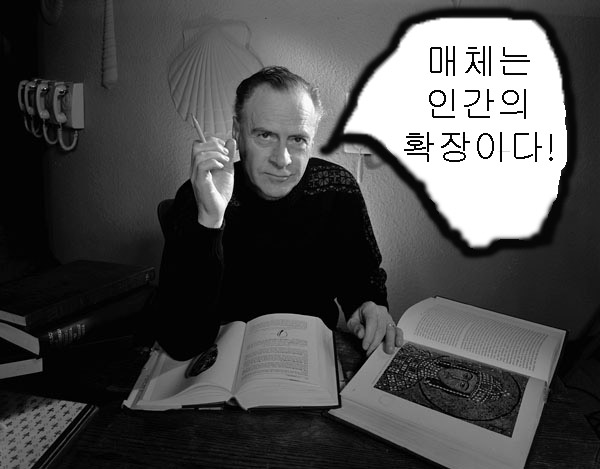
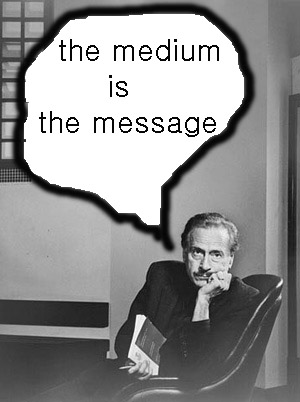
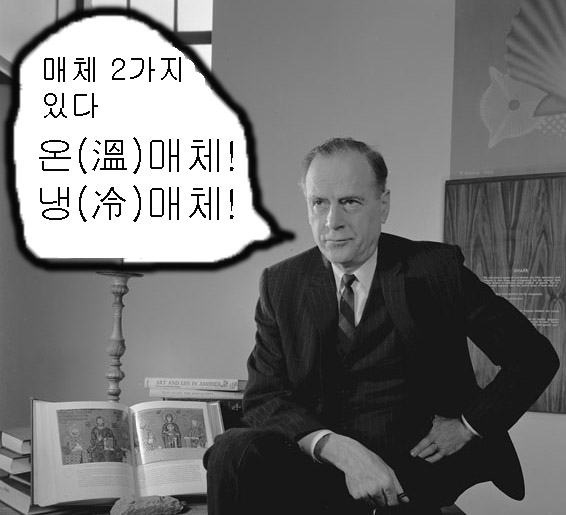
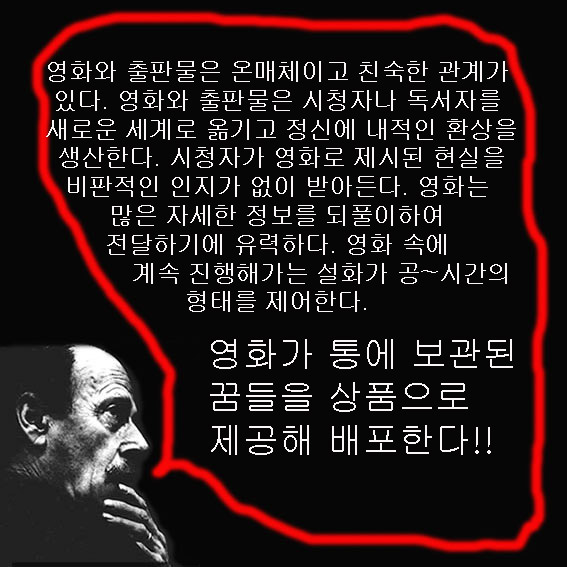
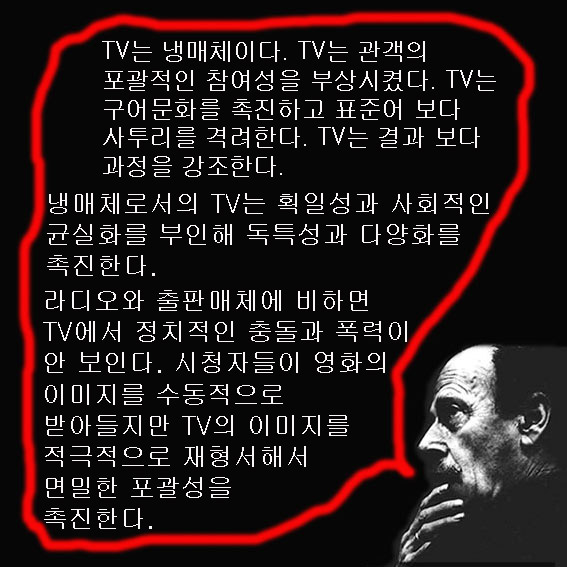
댓글 목록
관리 메뉴
본문
섹슈얼리티 대회. 대찬성. ㅋㅋㅋ 재밌겠는걸! 우리 반 아이들 (중학생들)은 동성애를 엄청 혐오해요. (성경을 들먹이면서)부가 정보
관리 메뉴
본문
저도 디디님 의견에 찬성~그리고 영상도 꼭 올려주셔요~^^
부가 정보